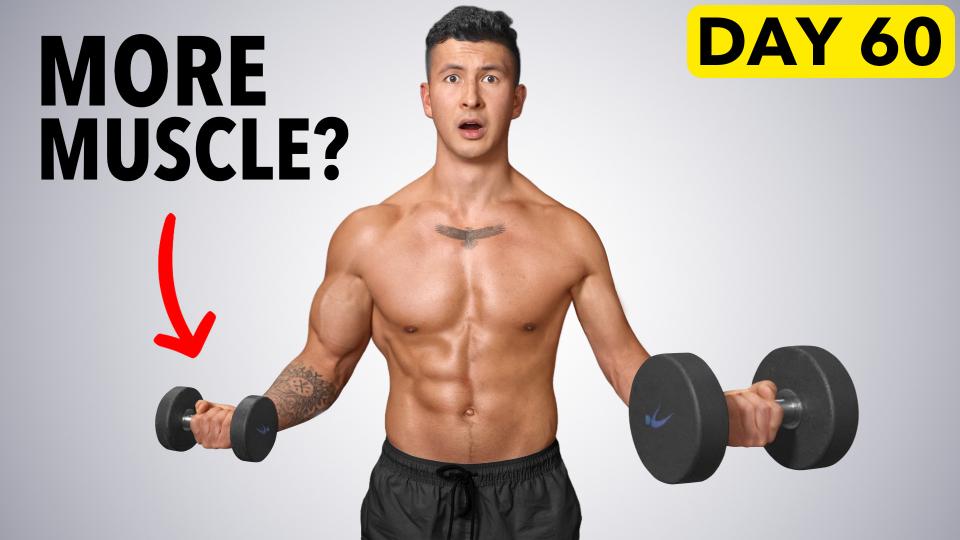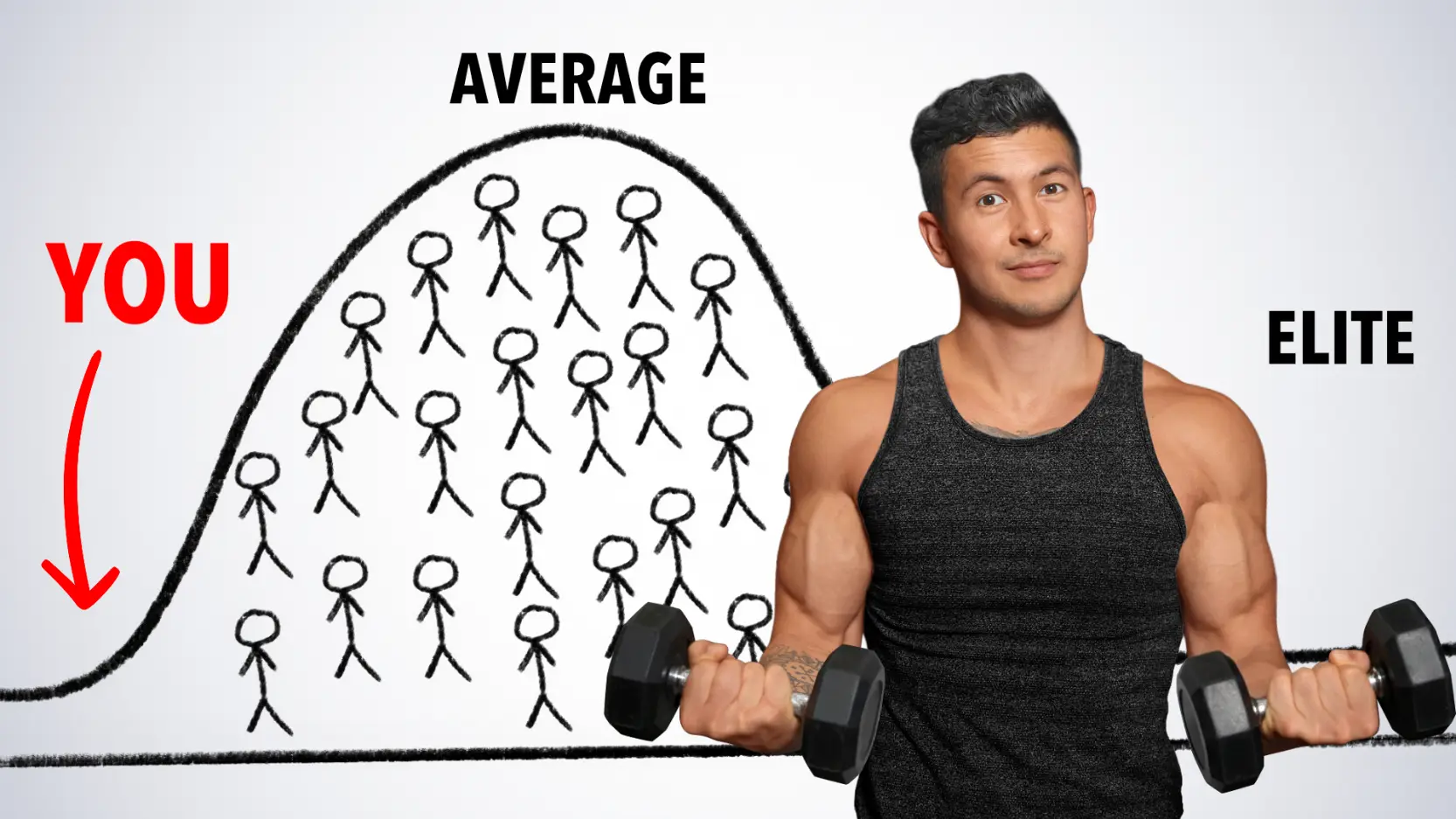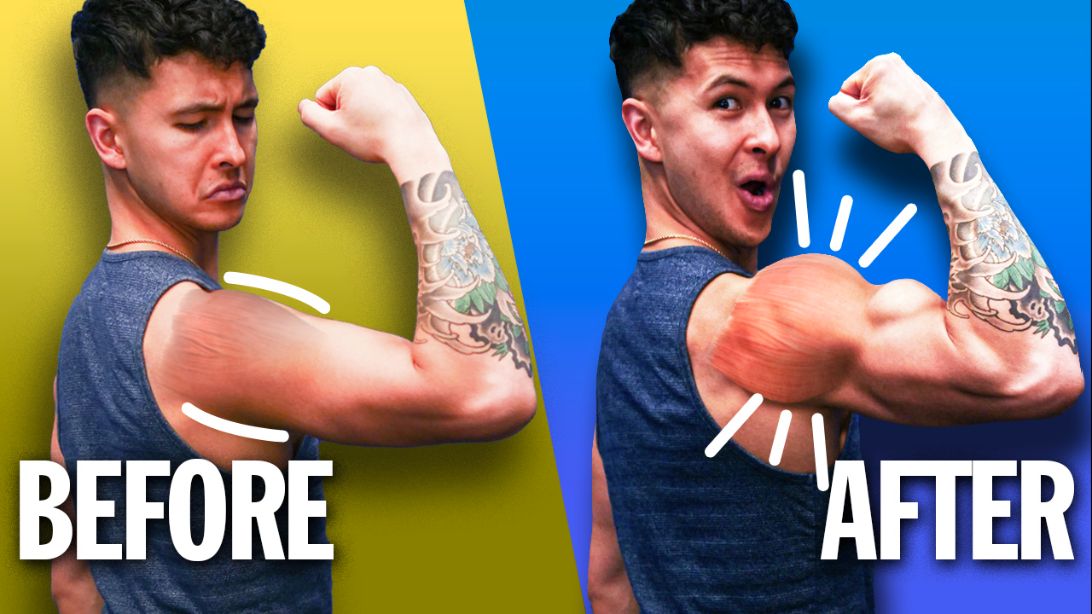
15 BEST Shoulder Exercises For Boulder Shoulders (And How To Use Them)
Struggling to grow your shoulders? In this article, I walk you through the 15 best shoulder exercises that'll truly skyrocket your shoulder growth. Size, width, and symmetry: check, check, and check.
The shoulders help complete a powerful looking physique and contribute to creating that V-taper we all want. When properly developed, of course. But why is it that so few successfully achieve this? Well, do a quick google search of the best shoulder exercises. And what do you find? Chances are, you'll run into an overwhelming number of exercises and workouts that all promise the same thing. Boulder shoulders.
But how many of you have hit your shoulders with everything in the book and yet ... end up disappointed because they just won’t seem to grow very well? Trust me. I know the frustration. I’ve been in the same boat.
Here's the truth. What you need, and what I wish someone told me back in the day, is more structure behind your shoulder training. Still, with all the options out there, though, this is much easier said than done.
What To Expect In This Article
So, today, my goal is to simplify this for you. I’ll break down:
- The best exercises for each of the 3 regions of your shoulders
- How to pick the right shoulder exercises for your body and equipment availability AND
- Show you how to combine them into a weekly routine
... to make sure you grow the 3 areas of your shoulders in a well-rounded way over time. Now, let’s start with the first region: the front delts.
Of course, the shoulders can't be the only body part you're looking to grow. That's where Built With Science programs come in. I've designed every program to be an all-in-one, science-backed "hack" that'll transform your physique in the quickest way possible - so you no longer need to spend months (or even years) wondering where you're going wrong with training. And if that interests you:
Click the button below to take my analysis quiz to discover the best program for you:
↓
Anterior Head ("Front Delts")
Your front delts run almost 45-degrees to the side relative to your torso. Meaning? To best activate this muscle, you want to avoid the common mistake of flaring your elbows out to the sides during overhead pressing.
This is not only a riskier position for your shoulder to be in but also fails to line up with the front delt muscle fibers. Instead, move your elbows into what’s called the scapular plane. This is a position that's slightly in front of the body.
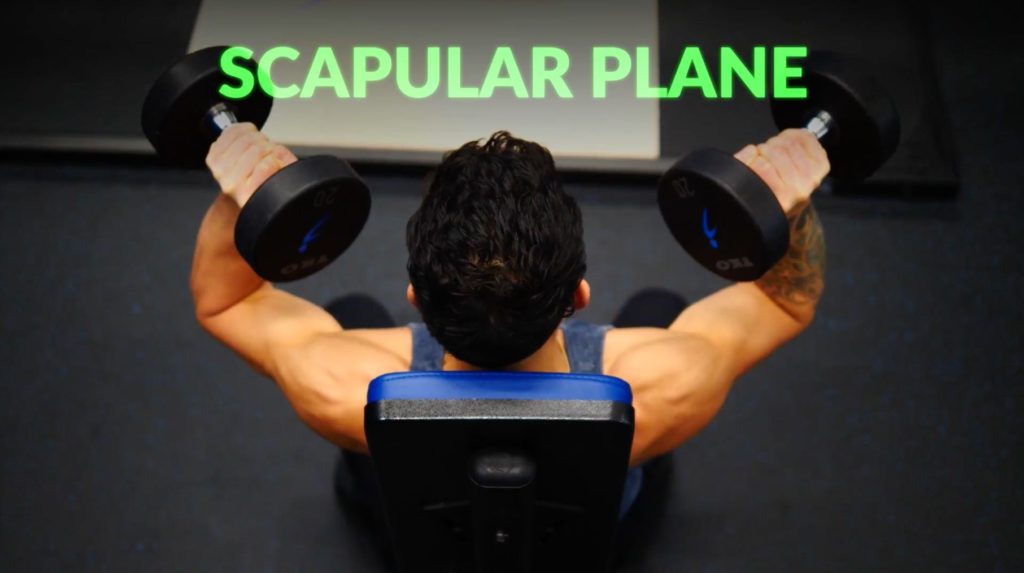
So, let’s apply this little “tweak” to 5 of the best overhead pressing options.
Exercise 1: Barbell Overhead Press
The first exercise is the standing overhead press. It's one of the best shoulder exercises you could do for the front delts. In fact, research shows that this exercise activates the front delts to a better degree than your traditional front raises!
To perform the press:
- Use a narrower grip. Ideally, this is one that allows you to position your elbows directly under the bar - and slightly in front of your torso. Right into the position we mentioned earlier.
- Squeeze your glutes and brace your core.
- Then, push direcly overhead. Be sure to keep your lower back neutral.
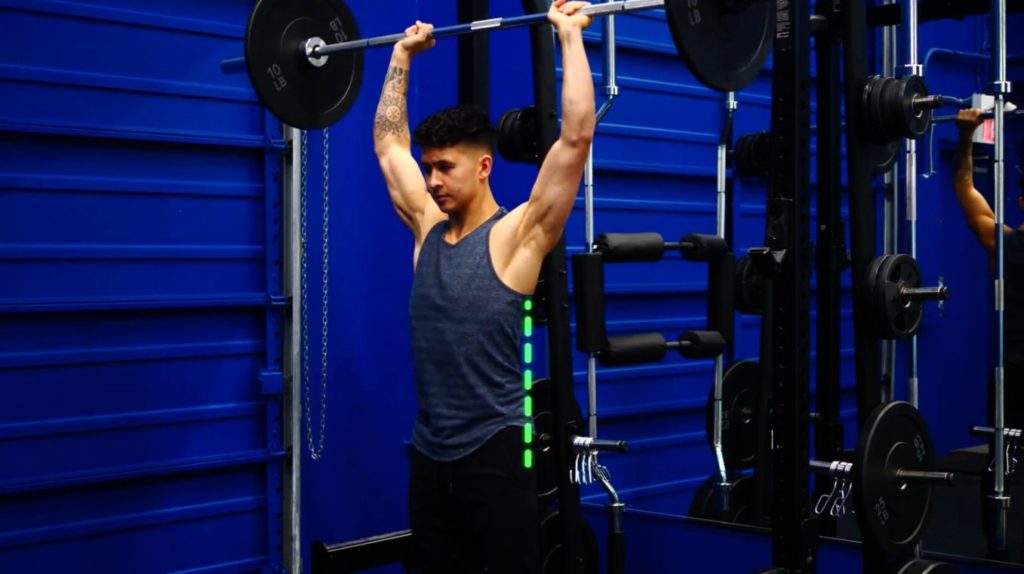
Here, you’ll want to use heavier weight and aim for 6-12 reps.
Exercise 2: Standing Dumbbell Overhead Press
The recommendation for the next exercise comes from a 2013 paper. It compares between 4 different types of overhead presses.
The standing dumbbell overhead press provided the highest activation with not only the front delts, but across all 3 heads of the shoulder.
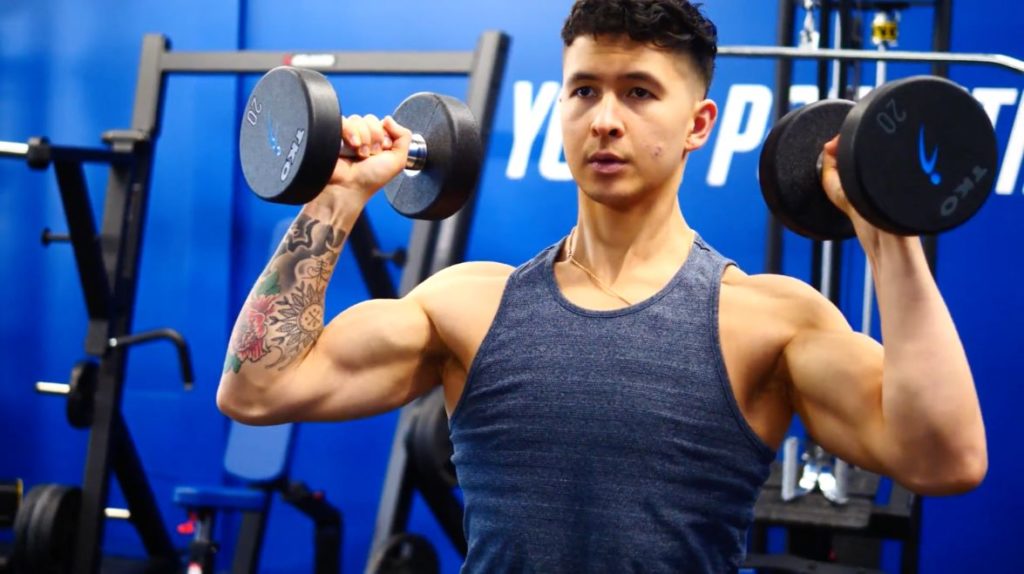
That said, there's a downside to this exercise. It can get increasingly difficult to overload once you get to heavier weights.
This is why you’ll want to do the opposite of what we did with the barbell overhead press with this exercise. Choose a lighter weight and aim for about 20-30 reps per set.
Doing so allows you to:
- Take your shoulder muscles close to failure WITHOUT
- Letting your setup be the limiting factor
Exercise 3: Seated Dumbbell Shoulder Press
Standing shoulder presses are great. They're undoubtedly one of the best shoulder exercises you could do - and should not be left out of your routine. But the benefit of a seated press is that it provides a lot more stability for you. This, in turn, enables you to really isolate the shoulders. Hence, making it a good option to include as well.
For these, press in the scapular plane. You'll also want to keep your elbows stacked directly under the dumbbells.
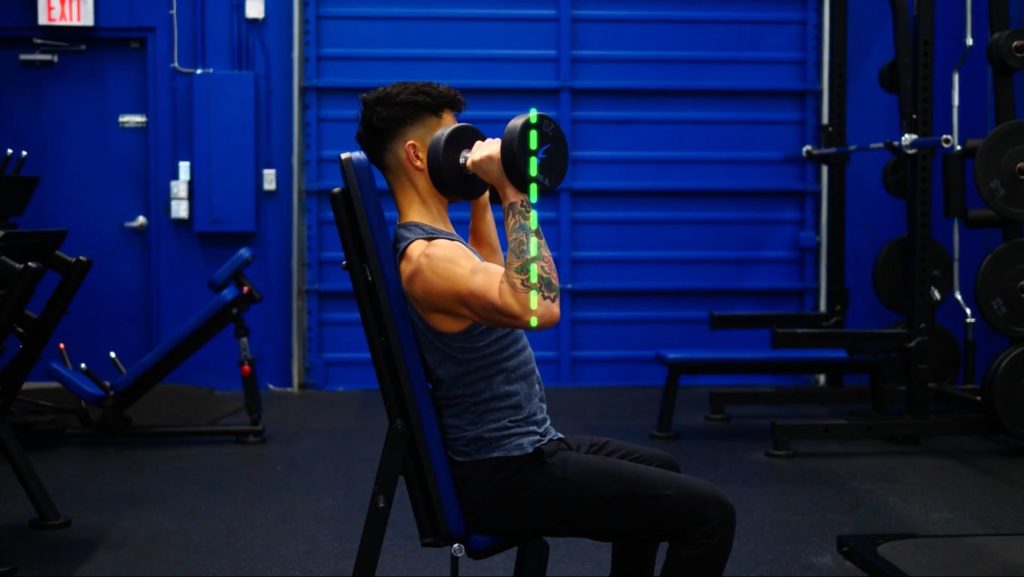
Exercise 4: Kneeling Landmine Press
This next move will help you work on any muscle imbalances you may have. This will be a particularly important point for you if you tend to only do barbell work. It also helps build scapular strength and stability, which is crucial for proper and healthy shoulder function.
Oh, and there's an added bonus, too. Because you’re pressing the weight with one arm, your core will have to work hard to prevent your torso from rotating too far to the loaded side.
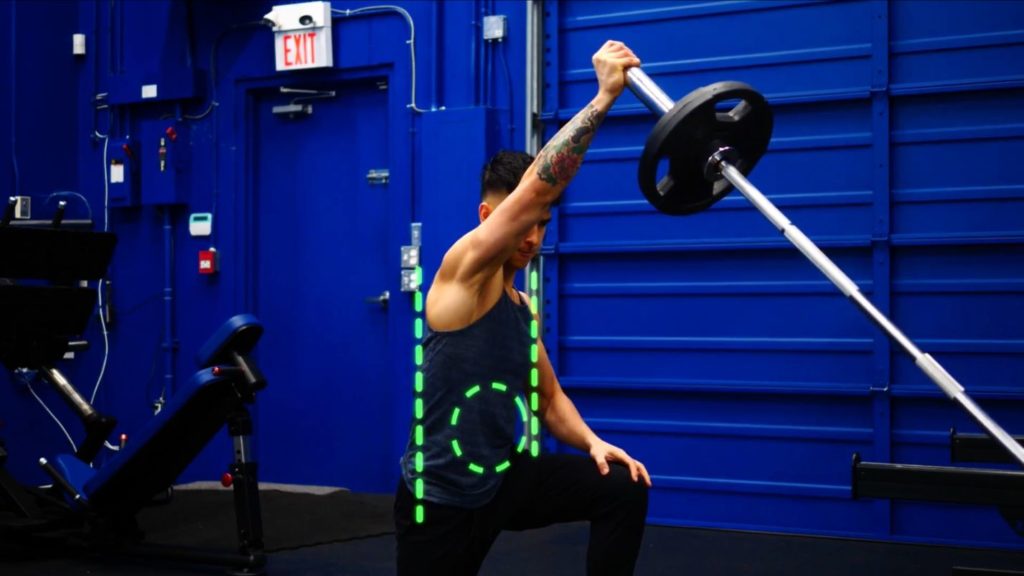
This can translate to better strength in compound movements like the deadlift and squat.
Exercise 5: Pike Push Ups
Can you hit the front delts without any equipment? Yes, and one of the best bodyweight shoulder exercises you could do is the pike push up. Just like the other exercises, pike push ups align the elbows in the way the front delt fibers run.
To set it up, bring your feet close to your hands to make an upside down V shape. Then, perform a press.
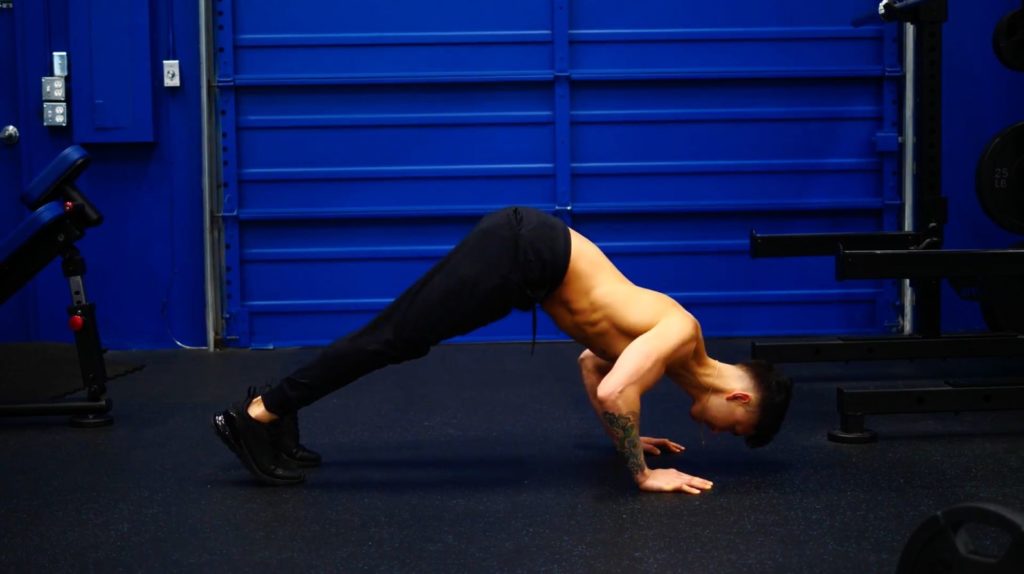
Find these too hard? You can start out by performing these on your knees instead.
On the other hand, if these get too easy for you after a while, feel free to elevate your feet onto a higher platform.
Lateral Head ("Side Delts")
Next, the lateral head. The key to their growth is to use a variety of exercises that stress this area in different ways. Note: I have done a past article that breaks down this concept in more detail with some unique exercises. Feel free to check it out here. But for now, here are 5 great options.
Exercise 1: Lateral Raise
Let’s start with the dumbbell lateral raise. As I’ve mentioned in past articles (like this one), the best way to perform this for the most activation and safety of your shoulder joint, is to:
- Use a slight lean forward
- Raise your arms in the scapular plane (slightly in front of your body) AND
- With your thumbs positioned slightly above your pinkies
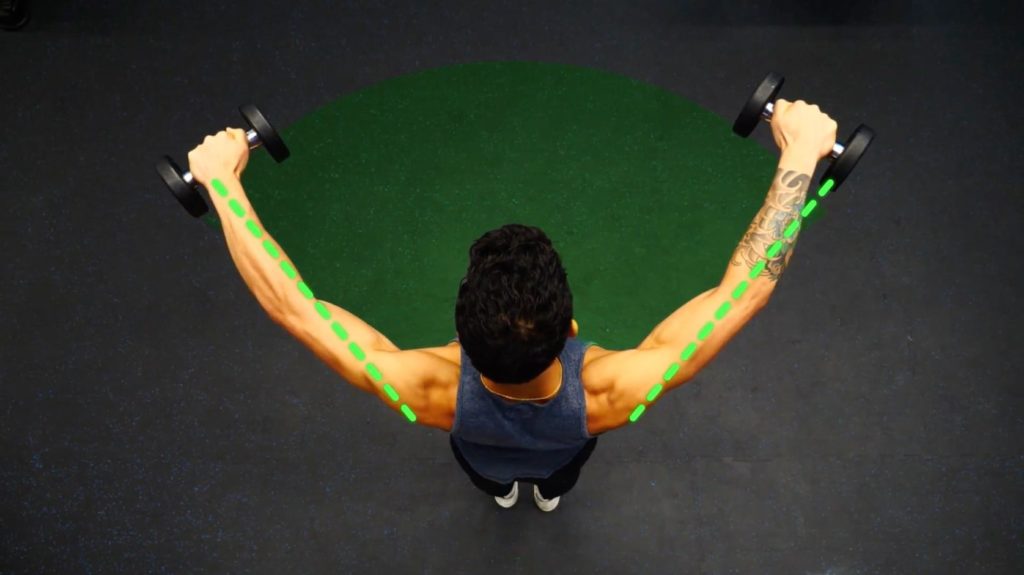
Exercise 2: Lean-Away Cable Lateral Raise
Remember when we talked about variety for maximal growth? Here’s one of the best shoulder exercises that fits the bills. It helps stress the side delt in a way that your standard lateral raise just can't do.
Here's something you need to know. The side delts only start becoming highly active once you’re past the first one-third or so of the raise. So hang onto the cable machine with your non-working arm - and slightly lean toward the direction of the raise. Doing so helps ensure the delts are working throughout the whole range of motion.
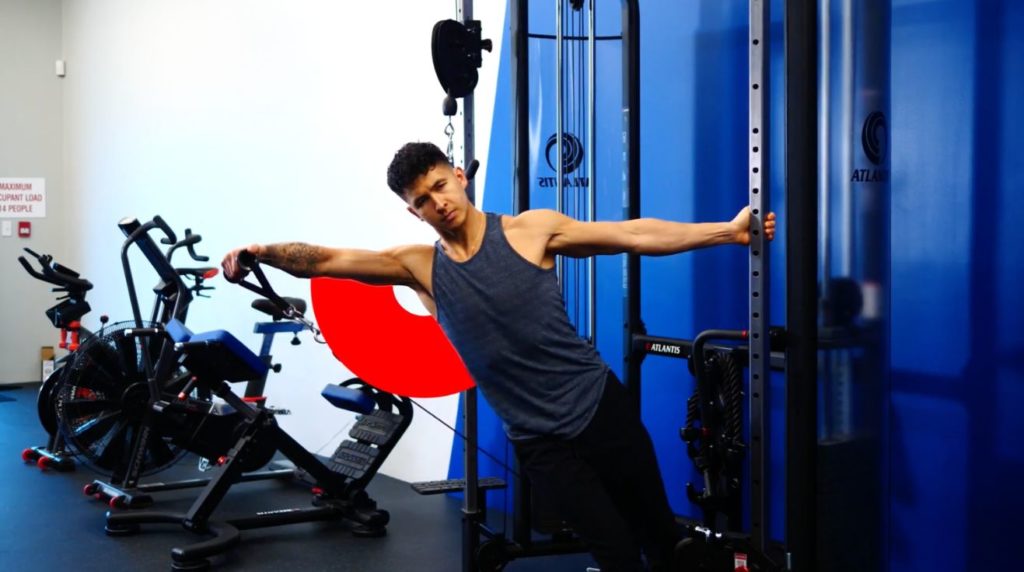
Don’t have access to the cable machine? You could also just tie a resistance band to a fixture and use that instead.
Psst: love learning about all these exercise tweaks that'll truly level up your muscle growth? Then you'll love Built With Science programs even more. They contain a ton more "insider exercise hacks" that'll supercharge your gains. So, if that sounds good to you:
Click the button below to take my analysis quiz to discover the best program for you:
↓
Exercise 3: Standing Cable Y-Raise
Although we’re still using cables here, this exercise will provide a different stress to the shoulder. It does so by taking your side delt all the way to it’s fully contracted position.
To perform it, grab the right cable with your left hand, and vice versa to crisscross. Pull the cable up into a Y position. Your arms should form ~120 degrees.
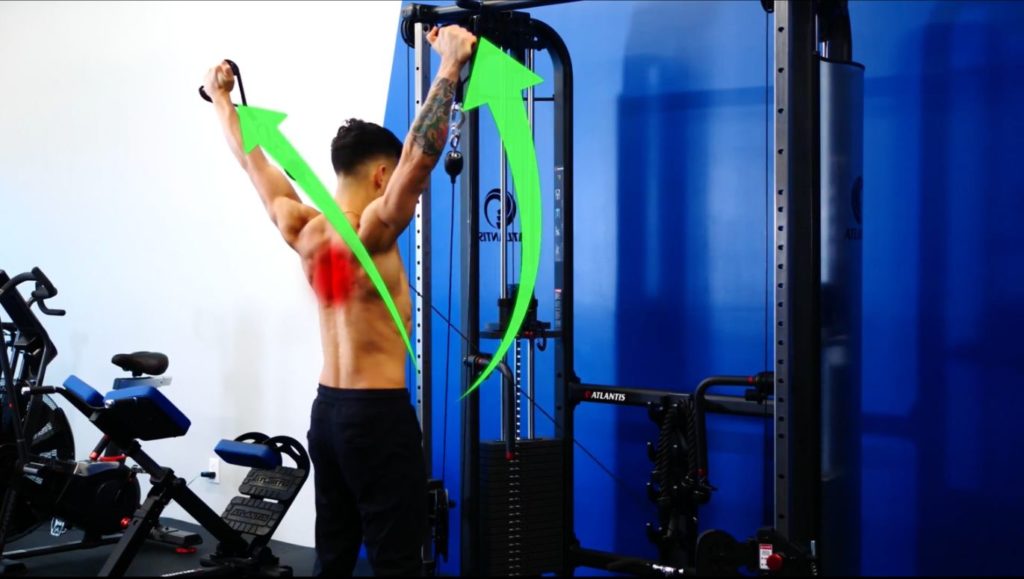
Exercise 4: Chest Supported Y-Raise
Don’t have access to cables? Here’s an exercise that will allow you to replicate the effects of cables. And all you need to do here is play with your body position. Note: this is also one of the best shoulder exercises you could do if your upper traps tend to take over during lateral raises.
Setup a bench to about 45 degrees. Then, raise your arms into a wide Y-shape holding light dumbbells or weight plates. Think about raising your arms out rather than up.
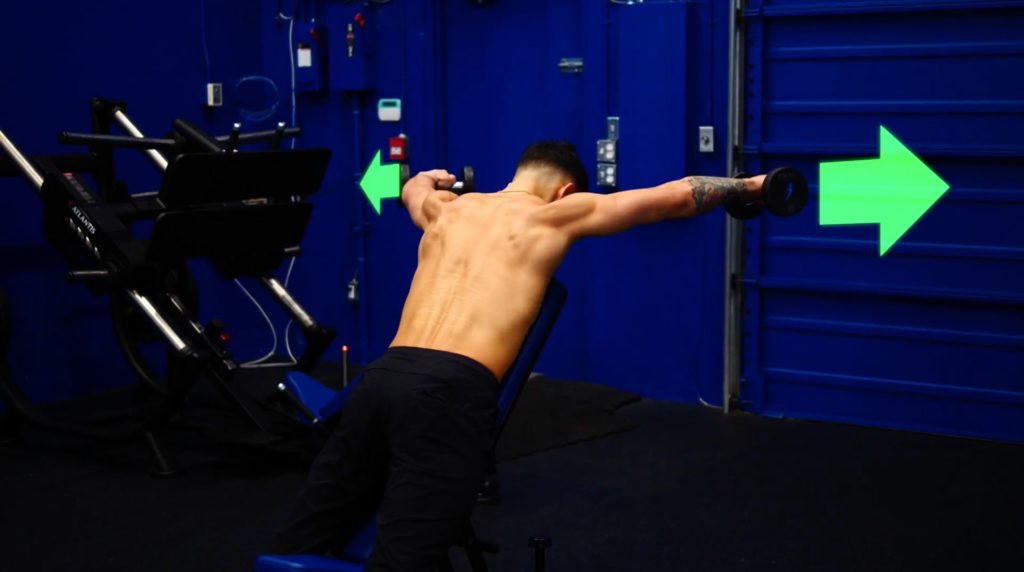
Exercise 5: Upright Rows
Last but not least, upright rows - but the better kind that’s safer for your shoulder.
To perform it:
- Widen your grip to about 2x shoulder width
- Raise your elbows only up to the level of your shoulders
- At the top position, ensure that your hands are not below your elbows - but instead, raised up to the same level
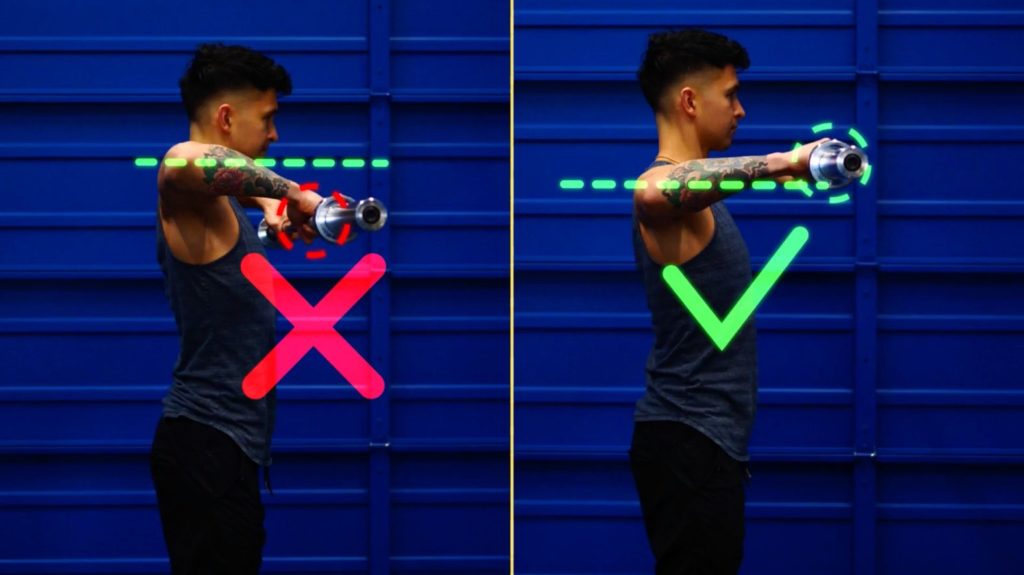
These can be done with dumbbells as well.
Posterior Head ("Rear Delts")
Finally, we have the rear delts. They are the key to balancing out the look of your front delts by rounding out the back of the shoulder. Its muscle fibers run at a roughly 45-degree angle. This means that to best target this muscle, you’ll want to use exercises where your elbows can pull in this 45-degree arm angle relative to the torso. Here are 5 exercises that do just that.
Exercise 1: Rear Delt Swing
First up, what I call the rear delt swing.
Grab a pair of light dumbbells. Then, lay on an incline bench set at about 30 degrees. Then, swing your elbows back behind your body. Make sure to keep your arms straight - and angled at about 45 degrees away from your torso.
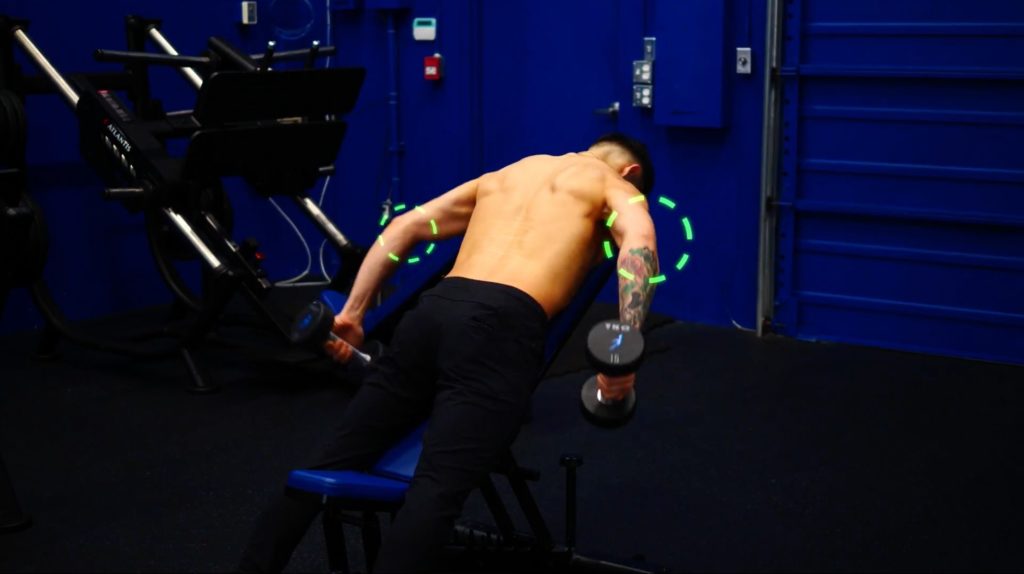
Push hard. Do as many reps as you can. And then when you can do no more, we’ll want to immediately drop-set to the next exercise.
Exercise 2: Rear Delt Row
Using the exact same setup and pair of dumbbells, you can take the rear delts to complete failure by turning the swing into a row by bending your elbows.
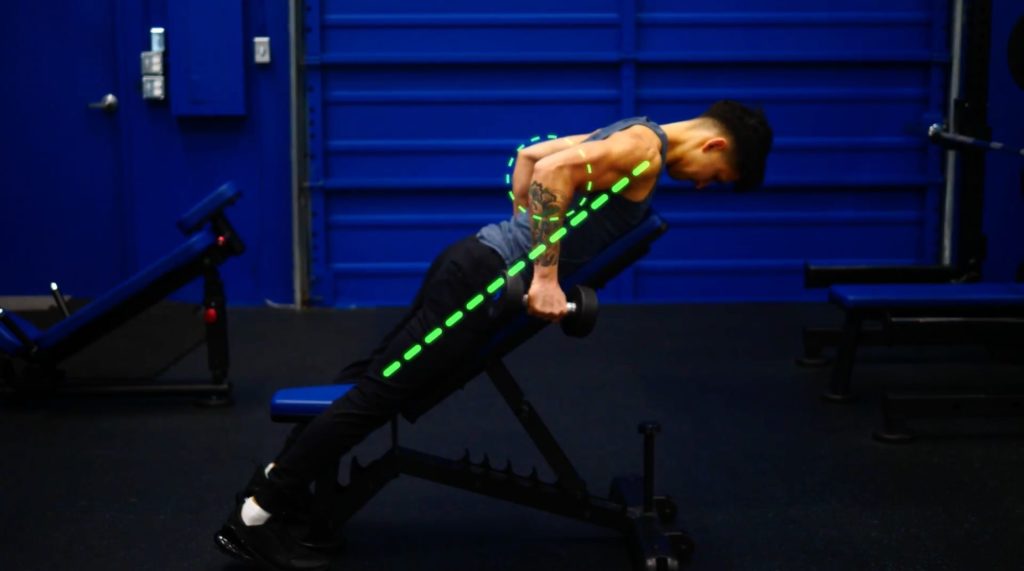
This will make the exercise slightly easier so that you can continue doing more reps until your rear delts are completely fatigued.
Exercise 3: Standing Barbell Rear Delt Row
Now, we’ll move onto a barbell movement. The key to making these rear delts focused will be with your elbow angle and how high you pull the bar. You’ll want to use an overhand, relatively wider grip that enables you to pull high to the level of your sternum with your elbows at a 45 degree angle. Think about pulling with your elbows as you do so.
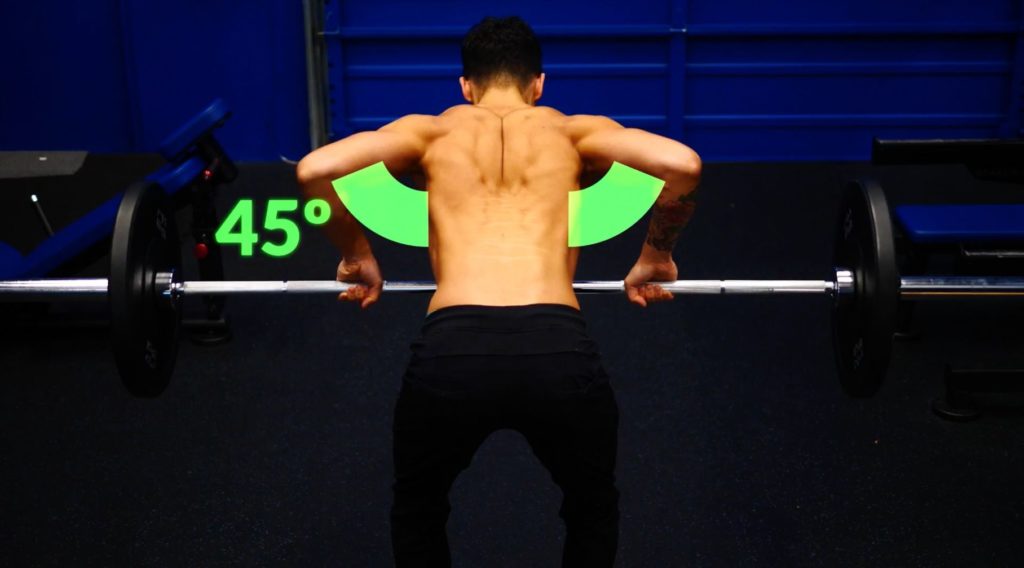
Exercise 4: Rear Delt Cable Row
And as with before, the same concept can be applied to a cable machine by using a wider attachment and that 45 degree elbow angle.
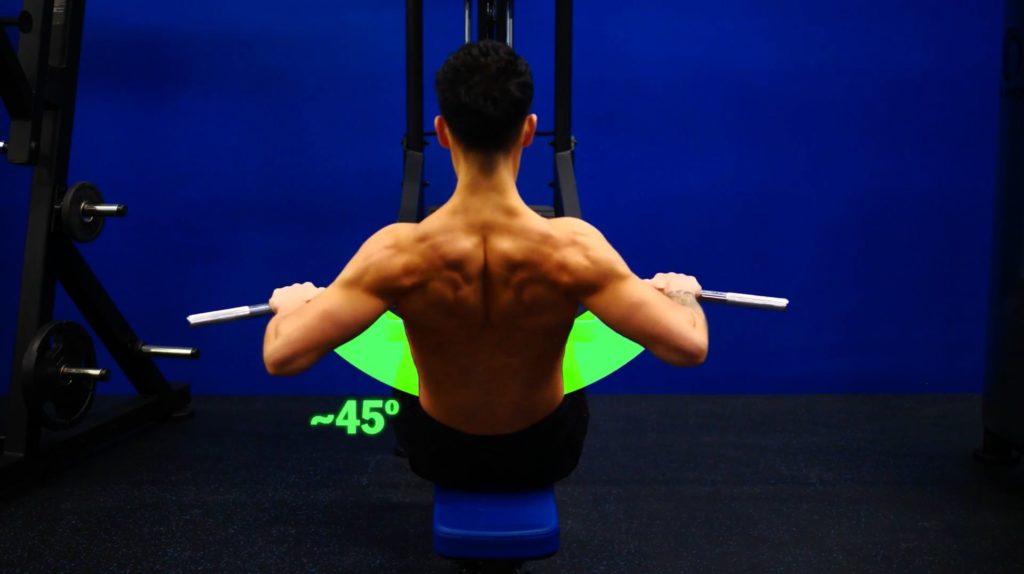
Exercise 5: Rear Delt Cable Pull
Last but not least, an exercise I got from Coach Paul Carter that trains the rear delts in its fully stretched position.
This has recently been shown to be an important mechanism of muscle growth, and is something that our previous exercises fail to do.
To perform it, sit sideways next to a cable machine and adjust the pulley to a height where you’re able to pull your arm into a 45-degree angle away from your torso. Think about reaching your arm to your opposite ear, and then pulling your elbow across then behind your body.
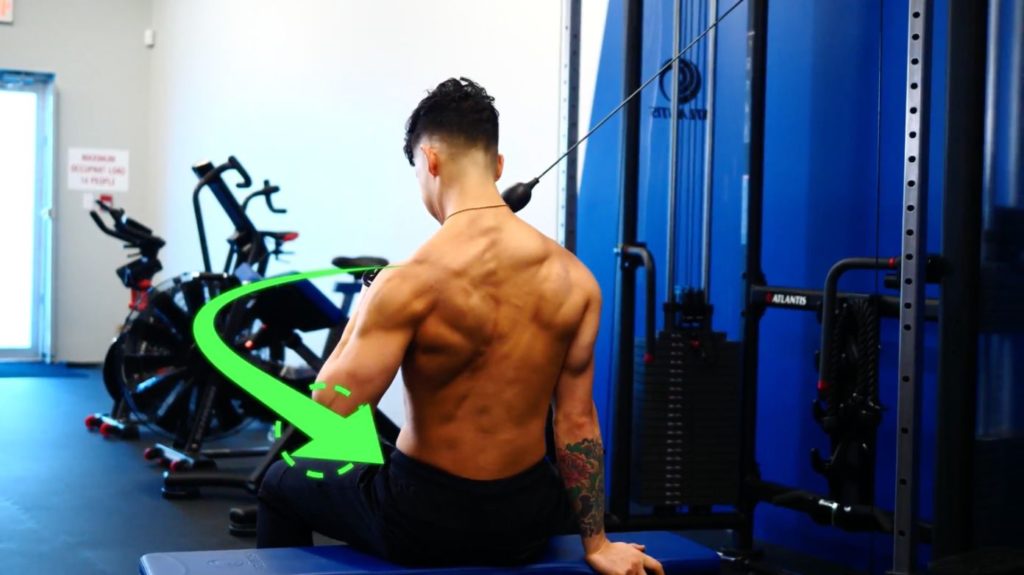
You can also do these with resistance bands if you don’t have access to the cable machine.
Putting It All Together For A "Boulder Shoulders" Workout
Now, here comes the most important part: putting everything together you’ve learned into a workout routine that’ll give you the shoulder growth you’re looking for.
Now, research shows that the front delts are already highly activated in many of the pressing movements you’re already doing. Take this study investigating muscle activation in the bench press, for instance. It found that the chest and front delts are activated to almost the same degree during the exercise!
Meaning? Your front delts are likely already well developed. So, you’re only going to pick 1 main front delt exercise to do throughout the week. You’ll want to emphasize the side and rear delts more by picking 2 exercises from each of those categories. You can do 3-4 sets of each exercise and throw those into your existing workouts throughout the week. Or, you could even do it all in one shoulder workout.
Sample Shoulder Routine
FRONT DELTS
Standing Barbell Overhead Press
SIDE DELTS
Dumbbell Lateral Raise
Chest-Supported Dumbbell Y-Raise
REAR DELTS
Rear Delt Swing → Rear Delt Row (dropset)
Rear Delt Cable Pull
But once you’ve found what shoulder exercises work best for you, stay consistent with those week after week. Only if your strength plateaus in any of those exercises or you simply get bored of them should you consider switching to another exercise from the list, which will typically happen every 4-8 weeks.
Takeaway
Guys, failing to have a detailed plan of attack every time you workout is why so many people stay stuck despite years of training. So, for a science-based program that takes care of all the guesswork for you so that you can transform your body as efficiently as possible, then simply take our analysis quiz below to discover what program is best for you:
Click the button below to take my analysis quiz to discover the best program for you:
↓
And in the meantime, you can check out more of my past articles here:
- 5 Reasons Why The Deadlifts Hurt Your Back (Fix Your Form!)
- Blow Up Your Rear Delts (3 Quick Exercise Tips For Faster Gains)
- 14 Best Exercises To Build The Perfect Back
Thanks guys, I’ll see ya next time!



